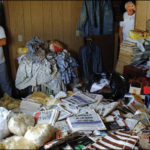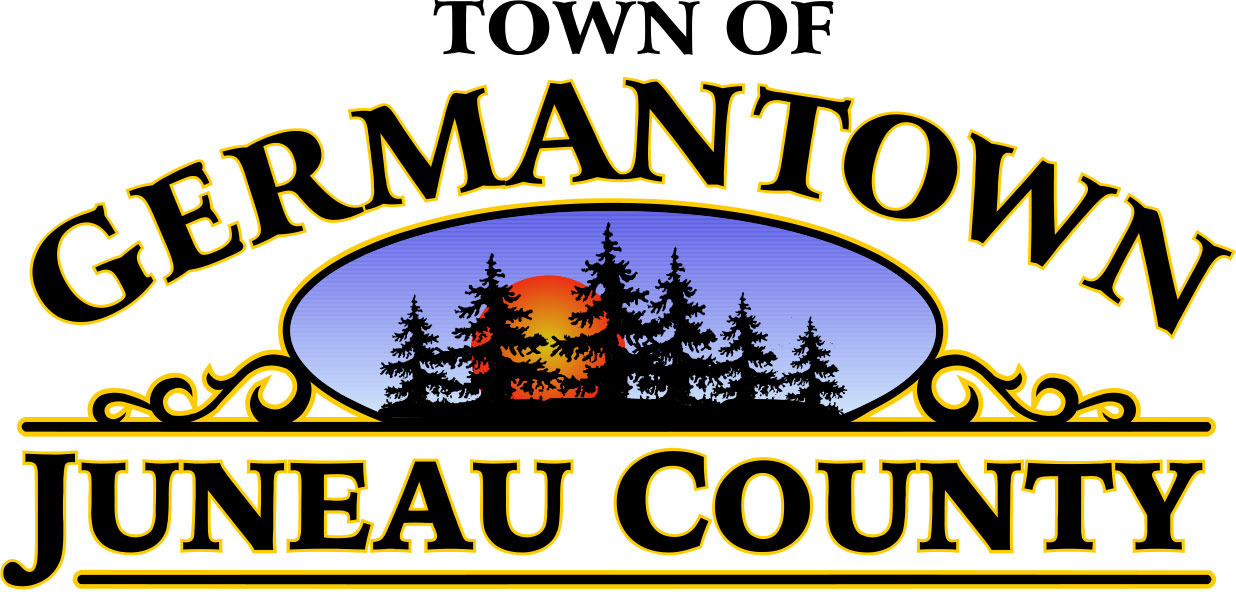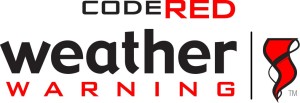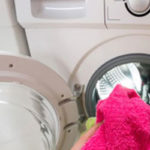Public Safety
The information posted here is to help residents in the Town of Germantown. It contains information describing Emergency Planning, Tornadoes and Wildfires, including potential risks, what to do in order to prepare for a possible event, as well as what to do during and after an event.
Staff
Emergency Management & Public Safety Director:
Christopher Leopold
N7560 17th Avenue
New Lisbon, WI 53950
Office: 608-562-5761
Email: [email protected]
Useful Information
Emergency Management – Prepare Now Evacuation Plan
Evacuating the Special Needs Population
Emergency Management – Juneau County’s SPECIAL NEEDS FORM
Special Needs information -preparing for disaster for People with Special Needs
This information comes from the Federal Emergency Management Agency (FEMA). You can find it online at www.fema.gov.
FEMA Basic Preparedness (1.1 MB)
CodeRED is a Community Notification System through which the public can receive notifications from emergency officials in the event of critical situations or for important community alerts. Examples include: Evacuation notices, boil water noticies, missing people, community alerts, tornado warnings, and more.
Or,
Text “JuneauAlerts”
to 99411 to Enroll
Wisconsin COVID-19 Information
Please refer to the website for additional information and update: https://govstatus.egov.com/wi-covid-19
Tornadoes
What to do Before a Tornado:
Be alert to changing weather conditions.
If you see approaching storms or any of the danger signs, be prepared to take shelter immediately.
Download FEMA Fact-Sheet for Tornadoes
- Listen to NOAA Weather Radio or to commercial radio or television newscasts for the latest information.
- Look for approaching storms
- Look for the following danger signs:
- Dark, often greenish sky
- Large hail
- A large, dark, low-lying cloud (particularly if rotating)
- Loud roar, similar to a freight train.
Wildfires
Download FEMA’s Avoiding Wildfire Damage: A Checklist For Homeowners
If you see a wildfire, call 9-1-1. Don’t assume that someone else has already called. Describe the location of the fire, speak slowly and clearly, and answer any questions asked by the dispatcher.
Preparing to Leave
- Lights. Turn on outside lights and leave a light on in every room to make the house more visible in heavy smoke.
- Don’t Lock Up. Leave doors and windows closed but unlocked. It may be necessary for firefighters to gain quick entry into your home to fight fire. The entire area will be isolated and patrolled by sheriff’s deputies or police.
Before The Fire Approaches Your House
- Evacuate. Evacuate your pets and all family members who are not essential to preparing the home. Anyone with medical or physical limitations and the young and the elderly should be evacuated immediately.
- Wear Protective Clothing.
- Remove Combustibles. Clear items that will burn from around the house, including wood piles, lawn furniture, barbecue grills, tarp coverings, etc. Move them outside of your defensible space.
- Close/Protect Openings. Close outside attic, eaves and basement vents, windows, doors, pet doors, etc. Remove flammable drapes and curtains. Close all shutters, blinds or heavy non-combustible window coverings to reduce radiant heat.
- Close Inside Doors/Open Damper. Close alt doors inside the house to prevent draft. Open the damper on your fireplace, but close the fireplace screen.
- Shut Off Gas. Shut off any natural gas, propane or fuel oil supplies at the source.
- Water. Connect garden hoses. Fill any pools, hot tubs, garbage cans, tubs or other large containers with water.
- Pumps. If you have gas-powered pumps for water, make sure they are fueled and ready.
- Ladder. Place a ladder against the house in clear view.
- Car. Back your car into the driveway and roll up the windows.
- Garage Doors. Disconnect any automatic garage door openers so that doors can still be opened by hand if the power goes out. Close all garage doors.
- Valuables. Place valuable papers, mementos and anything “you can’t live without” inside the car in the garage, ready for quick departure. Any pets still with you should also be put in the car.
Be Firewise In The Home!
Make sure you have Fire extinguishers!
In 2010-2014, U.S. municipal fire departments responded to an estimated 15,970 home fires involving clothes dryers or washing machines each year. These fires resulted in annual losses estimated at 13 civilian deaths, 440 civilian injuries, and $238 million in direct property damage.
Facts and figures
- Clothes dryers accounted for 92% of the fires; washing machines 4%, and washer and dryer combinations accounted for 5%.
- The leading factor contributing to the ignition of home fires involving clothes dryers was failure to clean, accounting for one-third (33%) of dryer fires.
- A mechanical or electrical failure or malfunction was involved in the vast majority of home fires involving washing machines.
- Fires involving clothes dryers usually started with the ignition of something that was being dried or was a byproduct (such as lint) of drying, while washing machine fires usually involved the ignition of some part of the appliance.
Burn Awareness
Most “fire-related injuries” are burns. In fact, approximately every 60 seconds someone in the U.S. sustains a burn injury serious enough to require treatment.* Increased awareness of the dangers can prevent injuries. Keep your family safe by learning how to prevent burns.
National Burn Awareness Week is observed the first full week in February, and it is designed to provide an opportunity for burn, fire and life safety educators to unite in sharing a common burn awareness and prevention message in our communities. NFPA provides a number of resources to help keep kids, adults and communities safe and aware of potentially harmful situations.
*Source:American Burn Association. (2016). Burn incident and treatment in the United States: 2016 fact sheet. Chicago: American Burn Association.
Hoarding and Fire Safety
A particular concern of the fire service is the chaotic nature of the material in many hoarding households, where blocked windows and exits can make fire attack and rescue difficult. (Photo: Newscom)
The excessive accumulation of materials in homes poses a significant threat to firefighters fighting fires and responding to other emergencies in these homes and to residents and neighbors. Often, the local fire department will be contacted to help deal with this serious issue. Since studies suggest that between three and five percent of the population are compulsive hoarders, fire departments must become familiar with this issue and how to effectively handle it.
The Danger of Too Much Stuff: NFPA Journal® looks at how first responders are teaming up with human service professionals to tackle safety issues related to compulsive hoarding.
Winter Safety
Before the snow flies, get ready for the storm. Here are a few simple things you can do to get your vehicles and home ready:
- Check the roads and take your time. Know before you go this winter season with the 511 Wisconsin Traveler Information System. By downloading the free 511 Wisconsin Smartphone app, following @511WI on Twitter, or visiting www.511wi.gov you can check road conditions, travel times and traffic cameras. Make sure you plan extra time if you travel and slow down.
- Have an emergency winter weather survival kit in your vehicle. Your kit should include water, snack food such as energy bars or raisins, blanket, extra hats and gloves, first aid kit and booster cables. Also have a shovel and a bag of kitty litter to use in case you get stuck in the snow. If you have a cell phone make sure you have a power adapter you can plug into the lighter. You can find more tip kits on our website: http://readywisconsin.wi.gov
- Get supplies for your home. In case there is a power outage, keep your home emergency kit stocked with food that doesn’t need to be heated. Also have bottled water, flashlights with extra batteries and a radio to listen to emergency information. For a complete list of kit items go to our website: https://readywisconsin.wi.gov/make-a-kit/
- Stay informed. ReadyWisconsin will keep you posted on any emergencies that occur during the storm. Follow us on Facebook (www.facebook.com/readywisconsin) or Twitter (www.twitter.com/readywisconsin) for updates.
Common Misconceptions
Madison, Wis. – In the confusion following a disaster, rumors, half-truths and misunderstandings about federal and state assistance can cause some storm-struck residents to miss out on much-needed help.
“The last thing you need in a disaster is misinformation,” said Federal Coordinating Officer Dolph Diemont, “and the best way to avoid that problem is to call and ask about assistance yourself.” As federal coordinating officer, Diemont heads up the U.S. government’s side of the disaster response and recovery efforts in Wisconsin.
Misinformation may deprive eligible individuals, households and business owners of vital aid from the state of Wisconsin and the Federal Emergency Management Agency (FEMA).
“Although our neighbors and fellow workers may believe they have the right information regarding disaster recovery, it is incomplete,” said Wisconsin Emergency Management Administrator Johnnie Smith. “Don’t rely on the word on the street. Call, go online or visit a Disaster Recovery Center and register for assistance. ‘I’his is the right source of information on the help that may be available to you.”
Anyone with damages and losses caused by the June severe storms, tornadoes and flooding can apply for assistance by calling 800-621-3362 (FEMA). 800-462-7585. www.fema.gov are open 24 hours a day. Both telephone lines, as well as online registration.
- I called my county emergency management director and reported my damages and losses, so I’m registered for federal and state disaster assistance programs. Not True: separate call to FEMA is needed to register for federal and state programs. The call to a county emergency management director was to help locate areas affected by the June storms that may have been overlooked in the first preliminary damage assessments.
- I have insurance, so there is no other help available. Not True: FEMA will not duplicate insurance benefits, but you may be eligible for help with losses not covered by your insurance. That’s why it is important to register for assistance even while you are working with your insurance company to assess your insurance coverage.
- I have to wait for my insurance adjuster before I apply for disaster assistance. Not True: Don’t wait for an adjuster before applying for aid or making repairs needed to make your house livable. Follow your policy guidelines and keep your receipts.
- I already repaired my home. I don’t need to apply. Not True: You might qualify for reimbursement of expenses not covered by insurance. Keep your receipts.
- I got help from the Red Cross, so I’m already registered with FEMA. Not True: Registration with the Red Cross is not the same as registration with FEMA. For federal and state disaster assistance, you must apply http://www.fema.gov by calling 800–62I-FEMA,(TTY) 800-462-7585 or online at .
- I got help from the Red Cross, so now I can’t get help from FEMA or the state. Not True: FEMA and the state coordinate a number of programs to help disaster victims. These programs are different from the emergency food, clothing and shelter initially provided by the Red Cross and other voluntary agencies.
- I have to be poor to qualify for disaster aid. Not True: The kinds of help provided depends on each applicant’s circumstances. Federal and state disaster assistance programs may be available to those with damages, regardless of income.
- I have to be turned down by my bank before Not True: If you live in a declared county, you are eligible to apply for a low-interest disaster loan from the U.S. Small Business Administration (SBA). If SBA cannot approve your loan application, you may be referred to other agencies for additional assistance, but that can’t happen if you don’t return your application. I can apply for a disaster loan.
- I must own a business to apply for Not True: The SBA low-interest loan is the primary source of federal assistance for long-term recovery for homeowners and renters as well as business owners. SBA covers uninsured or underinsured losses for real estate and personal property damage for homeowners and renters a loan from the SBA.
- I rent an apartment. Not True: Several types of assistance are available to renters. One grant may help them with temporary housing needs if they have to move because of disaster damage or loss. Another grant may be available to an eligible individual or family with serious, disaster-related needs and necessary expenses not covered by insurance or other disaster assistance programs. SBA also may be able to help renters replace damaged or lost personal property with a. low-interest disaster loan. I can’t get help.
- I’m self-employed and out of work; I can’t qualify for disaster unemployment benefits. Not True: Disaster Unemployment Assistance, funded by FEMA and administered by the Wisconsin Department of Workforce Development (WDWD), provides benefits for workers who normally would not qualify for unemployment compensation. These include farmers, farm workers and those who are self-employed and are out of work due to the disaster. Anyone interested in filing for disaster unemployment assistance should visit the nearest WDWD office.
FEMA coordinates the federal government’s role in preparing for, preventing, mitigating the effects of responding to, and recovering from all domestic disasters, whether natural or man-made, including acts of terror.




